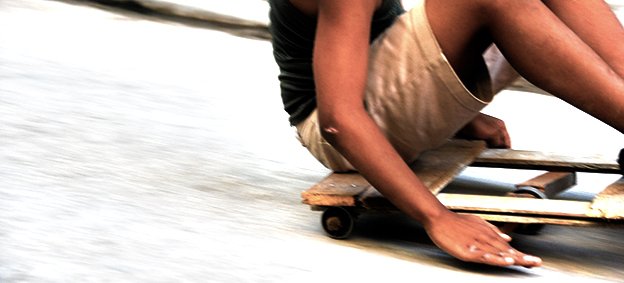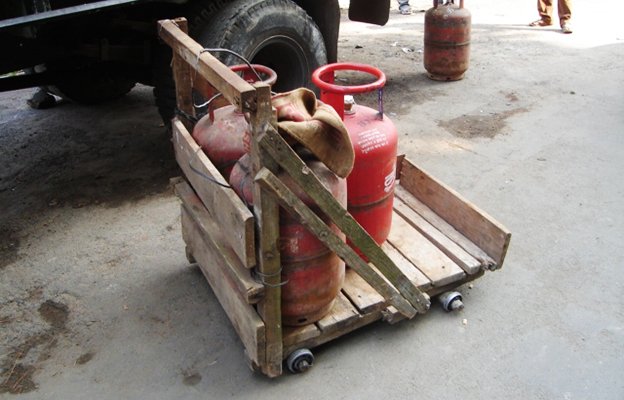The fidget spinner is easily the toy of the year 2017. And with a 5-year-old who keeps abreast of all the latest toy trends via YouTube Kids, it becomes difficult evading any such toy craze.
While pondering about what to get for Googool (my son, aka Advay) at an airport duty free shop, noticed the spinning sensation neatly stacked over one another on the store shelf and thought might as well fulfill the boy’s long-pending toy request.
And being the father that I am, ended up playing with the new toy. In my defence, a fidget spinner is actually hard to resist.

Aimlessly spinning the ball-bearing plaything, my memory cut back to the spinning ball-bearing wheels of a shaky home-made cart rolling down a steep slope at Lower Mawprem that led leading to the graveyards – Christian on the left and Muslim to the right. And the stairs that divided them was the path to the Hindu crematorium up the hill.

Lower Mawprem in the 1980s was a middle-class locality of Shillong whose fringes are marked by two beautiful waterfalls – Bishop Falls and Beadon Falls. As Mumbai has its East-West divisions of localities depending on which side of the railway track they fall in, Shillong’s localities are often divided into Upper and Lower, based on their relative altitude. Usually a stream marks the border.
While Upper Mawprem had a large Nepali population (along with its neighbouring localities of Barapather and Jhalupara. Jhalupara is home to what is arguably the best momo in Shillong), Lower Mawprem, in which I spent the first 12 years of my life, had a mix of small-time Bengali merchants (running small businesses at Bara Bazar, the city’s biggest market), lower and middle level central government employees (like my father), a sprinkling of Nepali, Bihari, Marwari, Punjabi and Sindhi population along with a sizeable number of Khasis, the indigenous tribals.
Given its heady mix of communities and proximity to Khasi-dominated localities, Lower Mawprem has been a flashpoint of Shillong’s decades old Khasi-non-tribal communal tension and also a regular target of marauding mobs ever since the first major riot in 1979.
The mobs were Khasi, with the exception of one in 1991 when a non-tribal crowd at the funeral procession of two traders, who were stabbed to death at Bara Bazar, turned violent. The repercussion was intense and we (along with many other non-tribal families) were forced to shift to safer localities (meaning one with a bigger non-tribal population).
The new locality Laban, is the city’s oldest and was a little snotty. Kids I got to play with didn’t make ball bearing carts, perhaps because many had bicycles (a luxury in the hills). However, in the relatively bicycle-free Lower Mawprem, a ramshackle cart with three ball bearing wheels – one at the front (that was steerable with the feet) and two at the back was the ultimate thrill.
As some of the population was involved in the business of automobile repair, the supply of discarded ball bearings was steady. There was also a rudimentary brake, essentially a moveable stick held in place with a nail that could be turned to touch the ground and the friction usually bought a racing cart to halt, occasionally with the occupant(s) tumbling out.
One push and you slide in top-speed down the slope. The ball bearings making a distinctive churring noise. The steeper the incline the more exciting it was. And that road to the graveyards was at a steep angle. Climbing up back again with the cart in tow was the only part we didn’t like much.
Such carts were not only fun but also utilitarian – to transport water (another luxury in rain-drenched but water scarce city) or gas cylinders. Though the carts meant for such business purposes were designed different.

I dreamt of someday organising a professional ball-bearing cart race on the long slope from the top of the hump of the Camel Back Road adjoining the Raj Bhawan to the Polo Grounds. Essentially the stretch of the route that we danced along on foot after alighting from the trucks carrying the Durga idols for immersion every Bijoya Dashami.
And as the horses had long stopped running at the Polo Grounds, I also wanted to race of the pony carts, that were common in the city during my growing up days.
As I fell asleep with the fidget spinner whirring between my fingers, in a dream I saw Googool shrieking with joy as his ball-bearing cart rolled down the hill road.





